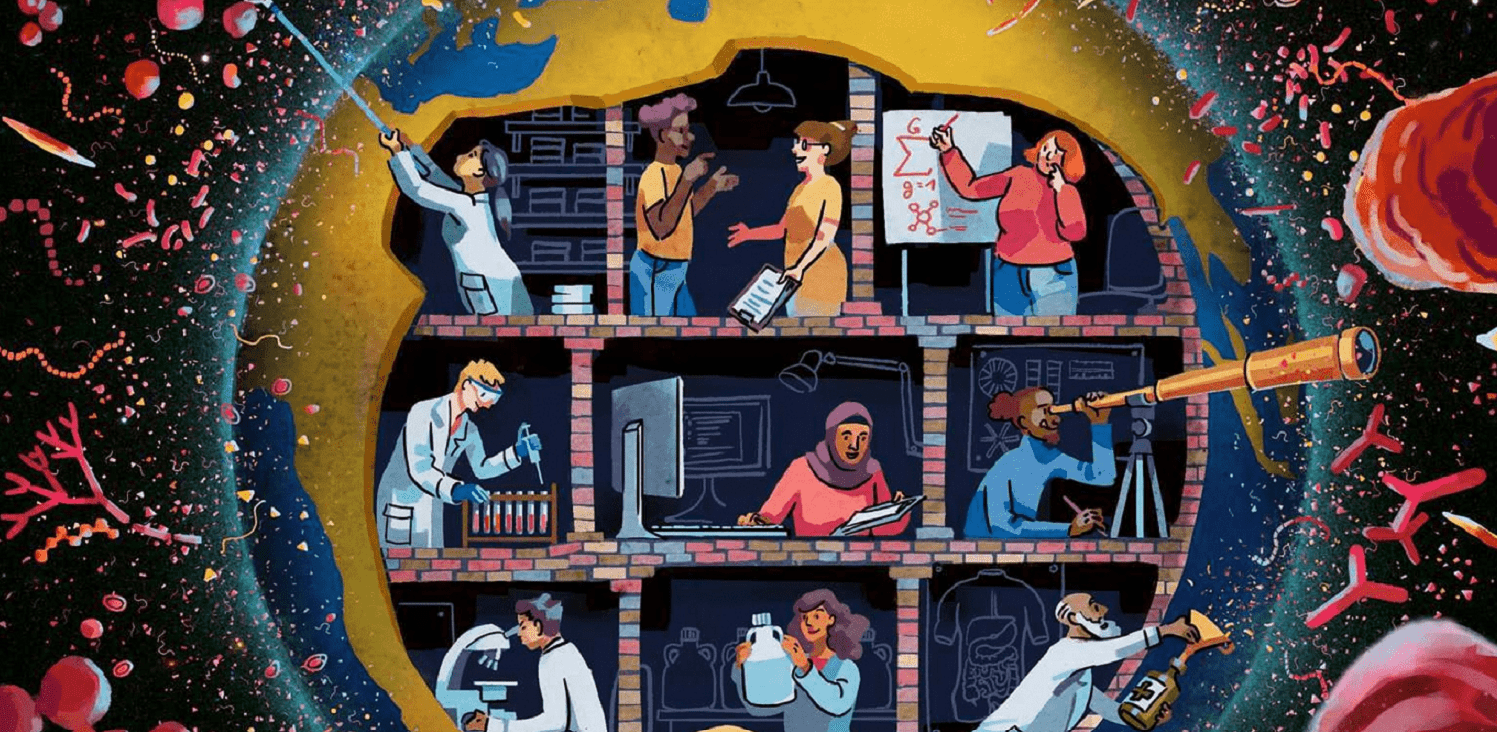A review of research on and with microorganisms and their achievements in recent decades
Microbes were the only life form on Earth for most of the history of our planet. Even today, they still make up the majority of species that are vital to the health of our planet. They produce much of our oxygen, help plants grow, maintain biogeochemical cycles and thus sustain our ecosystems. A. Murat Eren, a researcher at the Alfred Wegener Institute, Helmholtz Centre for Polar and Marine Research (AWI), the Helmholtz Institute for Functional Marine Biodiversity at the University of Oldenburg (HIFMB), the Max Planck Institute for Marine Microbiology (MPIMM) and the Carl von Ossietzky University of Oldenburg, together with his colleague Jillian Banfield from the University of Berkeley, has now described the astonishing progress that microbiology has made in recent decades in the journal Cell.
Microbiology investigates microorganisms, their ecology and evolution, their interactions with their environments, with each other, and with larger organisms. Since the first observation of microbes in the 1670s, microbiology has made remarkable progress within its relatively short history: from simple yet crucial observations, such as the impact of hand washing on reduced mortality rate of patients in hospitals in 1840s, to the arrival of genome editing technologies that utilize microbial enzymes to treat human diseases, in less than 200 years. For the 50th anniversary of the journal Cell, A. Murat Eren, a researcher at the AWI, HIFMB, MPIMM and the University of Oldenburg, and Jillian Banfield from the University of Berkeley have written a comprehensive review summarizing these efforts and the arrival and implications of the modern era of microbiology.
“We are probably only just scratching the surface of the biotechnological and medical advances that are enabled by studies of microbial life,” says A. Murat Eren. “By providing insights into the rapid progress in microbiology and demonstrating the implications of the past few decades of research, our review calls for an adjustment to how we view the smallest constituents of life, and recognize that our ability to overcome global challenges that require new solutions heavily depends on the extent of our understanding of microbes.” The diverse community of microbiologists are already working towards addressing some of the most urgent challenges of the human civilization: from the search for novel antibiotics to more effective vaccines, or microbial enzymes to degrade plastic and bioremediate our polluted environments, to editing the human genome to reduce the public health burden of hereditary diseases or editing plant genomes to produce more resistant strains to the consequences of climate change. “And this is precisely where greater integration across disciplines is essential, and why institutions that promote interdisciplinary work spanning across molecular biology, ecology, mathematics, computer science, physics, and chemistry to study microbes at scale are well positioned to make an impact through intellectual and technical breakthroughs.”
Today, rapidly advancing sequencers, mass spectrometers, and imaging platforms yield massively large and complex datasets from natural microbial systems. At this juncture computational approaches, which are also constantly evolving as evidenced by recent developments in deep learning and artificial intelligence, empower microbiology with new means to keep an eye on our natural habitats. “Our environment is constantly changing and survival depends on our ability to keep pace with those changes. Microbes can react very quickly to environmental changes, and insights into the determinants of microbial reactions to change can teach us a lot about our environments themselves” says A. Murat Eren. But this requires a substantial reliance on computation: by translating information across heterogeneous data types and by facilitating searches through large databases with millions of observations, computational approaches have become as important and as central as molecular approaches in microbiology. However, this new and highly data-driven era also increases the complexity of research and requires practices and mechanisms in education and research funding to catch up.
“In our opinion, microbiology, with its goal of understanding microbial life and its potential to use microbes to solve our most pressing problems through advances in biotechnology and biomedicine, is arguably the most important science in the middle of the 21st century,” concludes A. Murat Eren. But also recognizes that we are still in the process of learning how to use huge amounts of data to resolve yet-to-be-understood processes of natural ecosystems through integrative, interdisciplinary, and scalable means.
Original Publication
A. Murat Eren, Jillian F. Banfield: Modern microbiology: embracing complexity through integration across scales, Cell (2024). DOI: https://doi.org/10.1016/j.cell.2024.08.028
